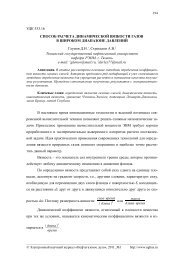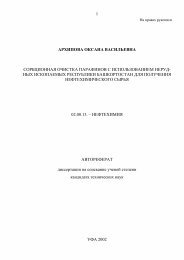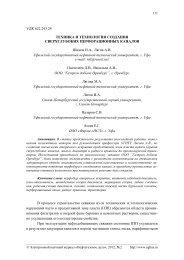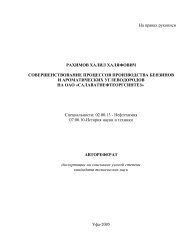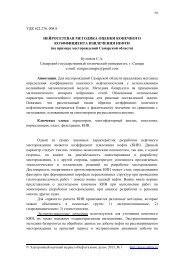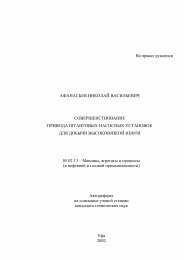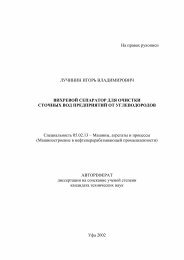FCC PROCESS OF HEAVY FEED STOCK WITH IMPROVED YIELD ...
FCC PROCESS OF HEAVY FEED STOCK WITH IMPROVED YIELD ...
FCC PROCESS OF HEAVY FEED STOCK WITH IMPROVED YIELD ...
Create successful ePaper yourself
Turn your PDF publications into a flip-book with our unique Google optimized e-Paper software.
and hot catalyst temperatures. One such process called deep catalytic cracking (“DCC”)<br />
requires 5 to 10 seconds of contact time to increase propylene yields. However, this<br />
process also yields a relatively substantial quantity of undesirable dry gas; i.e.,<br />
hydrogen, ethane and methane. New <strong>FCC</strong> catalyst technologies are being developed to<br />
enable refiners to achieve the challenging propylene yields required to meet the<br />
growing demand for propylene from <strong>FCC</strong>. In some cases, ancillary reactors and other<br />
treatment vessels have been provided to treat a particular fraction or reaction product<br />
stream. In some instances, multiple reactors are provided each with a different feed, in<br />
order to derive a particularly desired product stream. An <strong>FCC</strong> process is modified to<br />
produce greater yields of light olefins; particularly, ethylene, propylene and butylene<br />
with less production of dry gas; i.e., hydrogen, methane and ethane at relatively high<br />
conversion.<br />
<strong>FCC</strong> process for obtaining light olefins comprises contacting a hydrocarbon feed<br />
stream with blended catalyst comprising regenerated catalyst and coked catalyst. The<br />
catalyst has a composition including a first component and a second component. The<br />
second component comprises a zeolite with no greater than medium pore size wherein<br />
zeolite comprises at least 1 % wt. of catalyst composition. The contacting occurs in a<br />
riser to crack hydrocarbons in the feed stream and obtain cracked stream containing<br />
hydrocarbon products including light olefins and coked catalyst. The cracked stream is<br />
passed out of an end of the riser such that hydrocarbon feed stream is in contact with the<br />
blended catalyst in the riser for less than or equal to 2 seconds on average. The<br />
hydrocarbon products including light olefins are separated from the coked catalyst. The<br />
first portion of coked catalyst is passed to regeneration zone in which coke is combusted<br />
from catalyst to produce regenerated catalyst. Second portion of coked catalyst is<br />
blended with regenerated catalyst and introduced to the riser. The regenerated catalyst<br />
has substantially the same relative proportions of the first component and the second<br />
component as the blended catalyst that contact the hydrocarbon feed stream [9].<br />
Recycling coked catalyst including large pore zeolite or active amorphous<br />
material and zeolite with no greater than medium average pore size and blending it with<br />
regenerated catalyst improves the yield of light olefins and the overall conversion. It is<br />
the case even at lower residence times. Additionally, the lower temperature of the<br />
_____________________________________________________________________________<br />
© Oil and Gas Business, 2009 http://www.ogbus.ru/eng/<br />
3



